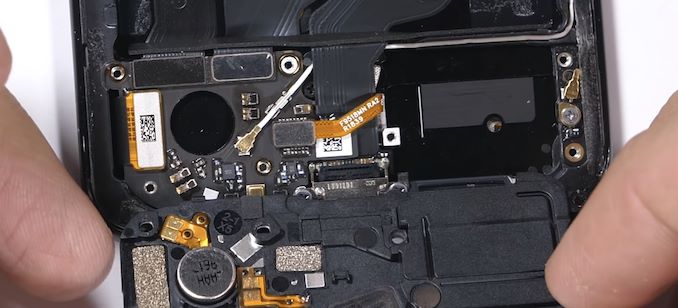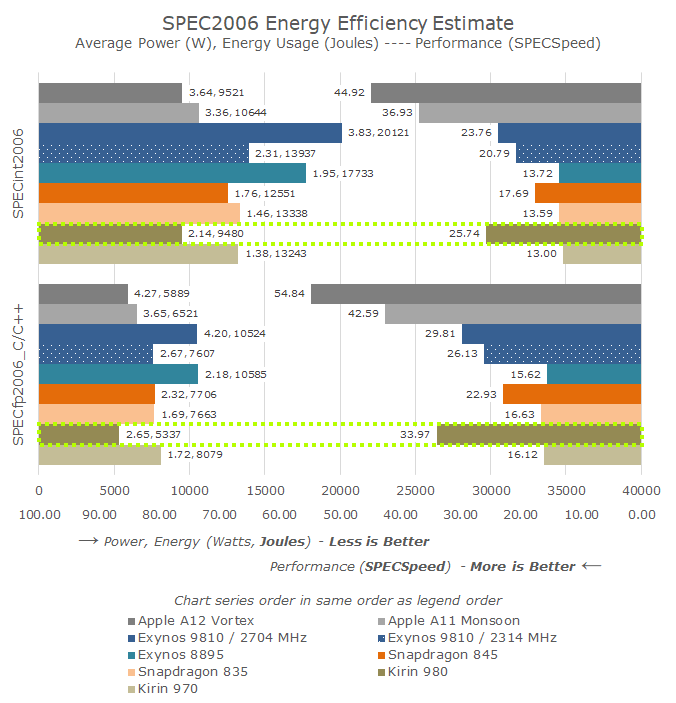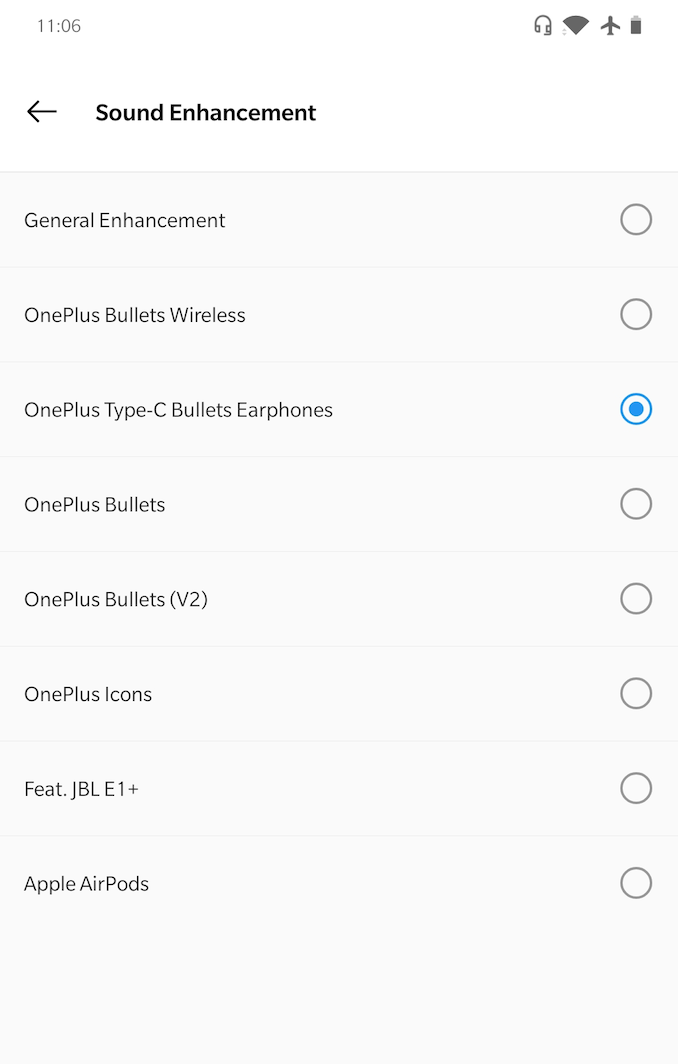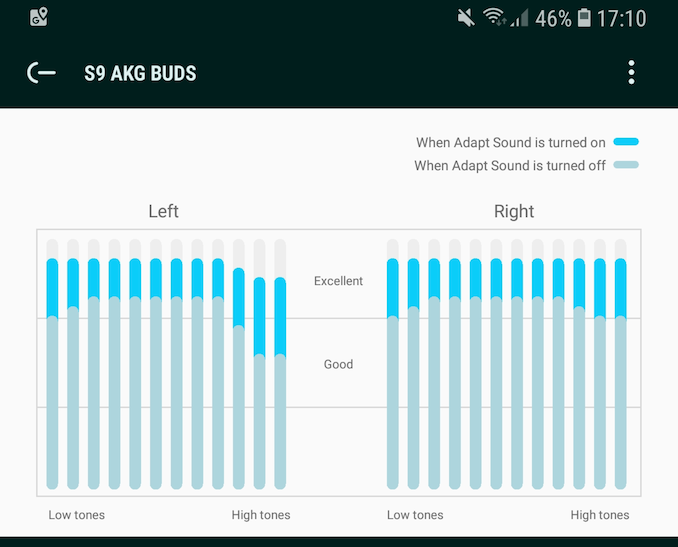AnandTech Year In Review 2018: Flagship Mobile
by Andrei Frumusanu on December 28, 2018 12:00 PM EST- Posted in
- Smartphones
- Apple
- Samsung
- LG
- Huawei
- Mobile
- SoCs
- OnePlus
- Year In Review
The SoC Is the Heart and Most Important Part of a Smartphone
While a few years ago, if you would have asked me what the most important part of a smartphone is, I would have said it’s the screen. In a sense, still many would agree with this today; however I find that smartphones these days have sufficiently good screens that there’s very little to improve on in terms of key characteristics and features. The AMOLED screen of a Galaxy S9 doesn’t offer all that better metrics than that of a Galaxy S6. Of course, there’s new stuff such as HDR, and the displays may have become brighter, but in the grand scheme of things these are just minor iterative improvements rather than defining experiences.
With many vendors now adopting OLED screens in their flagships, I find there’s much less of a differentiation on this aspect of a flagship smartphone. Of course, there’s still a few exceptions to this rule, such as LG notably struggling with the display power consumption of this year’s units, and of course a screen is only as good as it is calibrated.
So leaving the display as less of a major “critical” concern for most of 2018’s flagships, that leaves the SoC as the single most important component. The SoC defines what a smartphone is capable of – from the performance of the phone, to the media features to even how good the camera will perform given the SoC ISP is a key component in this regard. Most importantly alongside performance is of course power efficiency, and both are defined by the design and manufacturing of the silicon SoC.
It’s very much inarguable that 2018 was dominated by the Snapdragon 845: Qualcomm’s SoC powered essentially the vast majority of flagship smartphones, with only a few exceptions in the case of Huawei and naturally of course Apple’s iPhones. Here Qualcomm delivered one of its best SoCs to date, offering an excellent balance between performance and efficiency, all tied together with excellent software driving the hardware. This essentially guaranteed that almost any Snapdragon 845 phone will be an outstanding performer, all while delivering great battery life.
Silicon design is hard and also an expensive billion dollar venture – this is why most vendors rely on commodity components from Qualcomm. On the other side of the spectrum, we have Huawei and Apple as the only two fully vertically integrated vendors, who are also able to design their own silicon. It’s a risky business, however it can also pay off plenty when executed correctly.
An example of this paying off when executed well, is this year’s Kirin 980 as well as Apple’s A12. The new 7nm chips provided new levels of performance and efficiency, augmenting the products beyond that what can be offered by the competition. Both companies’ chipsets, as well as Qualcomm’s, have showcased fantastic improvements in terms of power efficiency.
Apple’s A12 this year especially was able to outshine the competition as we’ve now seen outstanding improvements in performance. This year’s performance jump in particular was significant for Apple – showcasing SPECint2006 speed base scores 15% higher than AMD’s Ryzen 2700X, while also not being very far away from Intel’s best desktop CPUs. We’ll be revisiting this performance comparison in the following months in more detail.
While we had some exemplary showcases on one side, on the other hand Samsung’s Exynos 9810 this year was quite a blunder. The chip initially had great promises, with the first “super-wide” core microarchitecture in an Android SoC. In practice however the SoC had massive issues both in terms of software, as well as just lacking the hardware power efficiency to be able to compete. This was felt no better than in Samsung’s own products: The Galaxy S9’s as well as the Note9’s differ in their SoC internals depending on the market. In practice, while the Snapdragon and Exynos variants very much look the same, they feel like very different devices as the latter has a significant performance and efficiency disadvantage.
2018’s Continued Headphone Jack Removal: Piling on the Stupid and Anti-Consumer Behaviour
2018 has continued to see a lot of companies remove the 3.5mm headphone jack from their smartphones. I’ve never really thought this was a good idea, as to me the reasonings that the companies gave just didn’t make any sense to me. Audio inherently is analog, and moving the internal audio DAC (which was fairly high quality) from being inside the phone to a lower quality DAC being just outside the phone on the connector is one of those things that still boggles my mind till today.
Much of the argumentation in favour of its removal was somehow increased internal space for other components. This seemed a far-fetched marketing argument that just didn’t hold up in practice, as essentially no vendor besides Apple (with the bigger taptic engine) has done anything of substance with the space.
 OnePlus 6 - Credit JerryRigEverything
OnePlus 6 - Credit JerryRigEverything

OnePlus 6T - Credit JerryRigEverything
The recent OnePlus 6T is the most abhorrent example of this as its headphone jack removal has done nothing to change the internal component dimensions on the bottom of the phone, and in place where the jack would be, we find… a slightly shifted vibration motor, and nothing else. This very much looks to be a calculated business move rather than a decision based on any kind of technical merits.
What really does boil my blood though isn’t just the argumentation that it saves on internal space, but that it somehow improves audio quality. Unfortunately this is again just a bad misconception that over the last year or two has now reached absurd levels. The one true technical benefit of having the DAC tightly coupled with a pair of headphones, is that you can tune the DAC to the precise frequency response of the drivers of those headphones, because well, it will never power anything else.
In particular this year’s two most prominent USB-C audio devices, Google’s Pixel USB-C earbuds as well as OnePlus’ Type-C Bullets fail at this exact promise: Google’s units in my experience just have abysmal audio, and you can do nothing about it as the phone offers absolutely no way to tune the audio output. If you plug the headphones in any other device, most of the time you’re also out of luck as most device’s audio equalisation options rely on hardware acceleration via the built-in DAC – but because USB-C audio is just digital pass-through, you’d have to resort to third-party software than pre-processes things on the CPU at increased battery drain.
Again as an example, OnePlus' marketing is very questionable in regard: On their webpage we see the quote:
“Better Audio with a Built-in DAC. We’ve crafted a listening experience that’s immersive, vibrant, and extraordinarily detailed, thanks to an advanced internal DAC with high-res audio support.”
Based on this you would expect the Type-C bullets to offer fantastic sound out-of-the box, yet there’s a hiccup: While the units do sound much better than Google’s, they’re still a far cry from optimal. In the OnePlus 6T’s audio settings we find a “Sound enhancement” option, and here we see OnePlus here provide equalisation presets for a set of popular headphones, among which is their new Type-C bullets. Enabling this option gives a much more optimal frequency response which does notably improve the audio experience.
Now the question here for me is: Why is this a software option on the phone rather something pre-baked into the Type-C Bullet’s DAC out of the factory? Do I also need to mention that in order to use the Type-C headphones on previous OnePlus devices you need to enable OTG in the settings (Which automatically turns off after 10 minutes), and even with this enabled, the OnePlus 6 currently doesn’t even actually offer the equalisation features of the 6T, as it’s only enabled for 3.5mm connected headphones.
3.5mm dongles have also been a complete disaster in the Android ecosystem: To date most smartphones relied on relatively high quality Qualcomm or Wolfson/Cirrus Logic DACs inside the phones, with Qualcomm in particular having made some fantastic strides in audio quality with their in-house ASoCs over recent years.
The same cannot be said of the commodity USB-C to 3.5mm dongles released to date; none of these are even remotely comparable with the performance of good internal DACs, and particularly Google’s bundled units are disastrous in terms of their analog output quality. Here I have to give credit to Apple: the company still seems to be the only one being able offer a 3.5mm dongle who has competitive analog audio output with little compromises. I would not be surprised if Apple’s recently released USB-C to 3.5mm dongle to be vastly superior in audio quality compared to anything offered by Android vendors.
To add insult on top of injury – companies are now starting to advertise the lack of a headphone jack as a premium feature. We addressed the OnePlus 6T, but also Huawei’s Mate 20 Pro not having a headphone jack, while its lesser sibling, the Mate 20 having one, is again some sort of nonsensical product segmentation which seems to be designed to simply generate more accessory sales. In this case you’re paying more for a phone to have a lesser feature.
Samsung, and partly LG, seem to be the only companies who are resisting this anti-consumer trend. Here Samsung in particular seems to have absolutely no issues in “managing its internal component space”, all while providing the best audio experience in the mobile space. It still surprises me that Samsung is still the only company to offers an actual audio calibration option via its Adapt Sound feature – a psychoacoustic feedback equalisation feature that will tune the audio output of its internal DAC to an experienced flat frequency response based on your particular headphones and your particular hearing. I vehemently urge Samsung to continue on their current path, as the competition can't seem to stop blindly shooting themselves in the foot.
Overall, 2018 has been a year of sheer stupidity when it comes to the topic of audio, 3.5mm headphone jacks, and USB-C audio. Companies will need to reconsider their strategies, and consumers who value actual good audio quality will need to vote with their wallets.













65 Comments
View All Comments
quiksilvr - Friday, December 28, 2018 - link
If the Samsung lineup loses the headphone jack it will all be over. I really wished phone makers would put a USB-C Port on the top and a second on on the bottom so users can mix and match which ones can be used for what (top/bottom for headphones and top/bottom for charging simultaneously, top and bottom for headphones so two people can listen without tangled wires, etc.). The complete lack of USB-C headphones in the market is another major reason why people still want 3.5 mm jacks on their phones. You can't just remove the port and give us a dongle; that is not a solution.zodiacfml - Sunday, December 30, 2018 - link
I made a similar comment in Gsmarena on their article on dual things on smartphones. I suggested a dual type-c port and Asus narrowly did that with their RoG gaming phone.I doubt companies would. The reason they removed the jack is to save money, so another type-C port will be more expensive than retain the jack
Quantumz0d - Sunday, December 30, 2018 - link
Exactly, and to Andrei - First of all the Audio port 3.5mm jack piece is excellent, no press site mentions this at all all praise the iPhone and others and fall exactly what the OEMs put their Kool-aid out. Thanks for that.There are a lot of shortcomings or wrongly mentioned points there, likewise how you put a 6T vs 6 and mentioned Apple included a powerful taptic engine in that space. The shortcoming here is Apple taptic engine reason is given because of the hardware chipset design the way how we perceive it. They show the chipset doesn't have space. But somehow the PCB design is always varied among 6 - 6S and 7 and so on, the PCB design will have space, look at how A12 stacked chipset in iPhone X, they folded the chipset and filled with via holes and connected them like OG iPhone. And Apple has the strength and resources to do that, not only that how the Taptic engine size varies among all iPhones and iDevices. Apple blatantly stupidly moved to that because of their user base who only knows Bose / Beats trash tier sound quality and the Made for i device program which has licensing costs and their Wireless Market. Read the below Statista report on the 2016 marketshare on the wireless devices.
https://www.soundguys.com/was-ditching-the-headpho...
Next the Note 9, why there's no mention of the Note 9 PCB and internal design ? while the 6T is a good point but that Chinese company CEO is always a PR face for asking polls and etc while saying the In Display FPS is the reason which is stupid, Meizu 16 has it with exactly same design as Samsung S9 and then the Note 9 packs this massive sized battery with S-Pen and has a same taptic engine like iPhone on the home button on screen, and packs the best in class display panel and almost everything in a phone from Health SpO2 sensor to the damn USB to HDMI output. And why not even look further like Vivo's Nex S smartphone, It has this popout camera with massive 4000mah battery again, with robust construction of the moving part, has a powerful Hi-Fi DAC chip as well from Cirrus Logic, ofc the "King of smartphone Audio LG, with their V30" I have one, V30S ( More on these Hi-Fi in the second comment)
We can clearly see how the marketing beast pays off, how the new DRM/walled garden ont he lack of 3.5mm universal jack war rages on against consumer, they aren't shooting in foot, they are shooting us in the foot forcing us to move to those planned obsolescence stupid BT audio. I had a Bose Soundsport wireless from my friend which sound rubbish vs a simple IEM like Fiio EX1 II due to the fact that it needs LDAC - An expensive license from Sony, aptX only 320Kbps limit, AptXHD ~700kbps data rate and latency issue tons of problems while it's super simple to design a device which can house a simple analog port, it was 1 year old and guess what ? the battery was dead, how are we supposed to iron that out ? Li-Ion technology is a failure on longevity of the devices, Apple is notorious for lack of user intervention on customizing or upgrading or repiring their products and their abject failure on not including the headphone jack in the latest iPad Pro which is structurally flawed worse than the 6 bend gate Touch Disease IC issue. Google should be called out as well, after blasting Apple with their cheap iPhone clone Pixel Gen 1 having a headphone jack and dropping it on Gen 2 saying "enjoy high quality digital sound" - master BS from Google, Audio as you said is analog and no way we can hear digital BS, coming from such prolific company like Google, and going to the peaks like removing it from Slate ? Omega class retardedness and people are fine with it, that Huawei going proprietary SD slot ? worst. Such lame attempts to mimic Apple on ecosystem walls and lockdowns ? and on the audio side on saving a few bucks and asking more for the trash grade wireless sets which are expensive and go to dumpster in 1 year ? Checkout this Verge piece.
https://www.theverge.com/2017/10/5/16426754/pixel-...
It's a shame how the industry from the OEMs to the damn press sites are so biased towards the companies losing out their first hand reviews or whatever YT videos or articles to generate stupid clicks, a shame Idk how people are happy doing their shilling jobs for companies. Apple is so successful in ruining one of the best things in the history of technology, a pristine proper Audio listening through the 3.5mm analog 100 year old jack which simply does the job well without any issues.
Wish you should have covered it on a vast spectrum of devices rather that 6T but however the 6T is a good device to pick, since it has too much of fan following or highly praised for it's stupidity of under performing specs.
GreenReaper - Friday, December 28, 2018 - link
Realistically the answer to the audio question is to a) not buy flagships at all, if possible, and b) only buy phones with 3.5mm sockets. Send a signal through your purchases. I'm doing my part! 😼ahamling27 - Friday, December 28, 2018 - link
I'm super pleased with my OnePlus 6. 3.5mm jack, and everything I need in flagship. Now the 6t on the other hand... 😒SkyBill40 - Friday, December 28, 2018 - link
Samsung, "providing the best audio experience in the mobile space", is cute. They're nowhere close to the best and multiple tests across the spectrum have shown that rather clearly. They are often outdone by their peninsula rival, LG, who has a significantly better DAC built into their phones.Andrei Frumusanu - Friday, December 28, 2018 - link
This is wrong. LG does have a good DAC, but it has its drawbacks. The quad-dac feature serves just as a way to increase voltage, but it also increases distortion, for most average impedance headphones you are good to just leave it off.Samsung in that regard as an adequate DAC (The Snapdragon versions perform better), but for the average user Adapt Sound will bring an much better experience to your ears than LG, even though LG might win in regards to pure analog reproduction performance out of the 3.5mm jack.
SkyBill40 - Friday, December 28, 2018 - link
"...Adapt Sound will bring an much better experience to your ears than LG..." That's highly subjective and a generalization at best. It's funny though how you say it's wrong, yet it has been tested and Samsung has, in fact, been found... lacking by comparison.Andrei Frumusanu - Friday, December 28, 2018 - link
It's a matter of fact and there's nothing subjective about it. Adapt sound will equalise for the actual perceived FR that you hear, and this makes for a bigger difference in experience than the slightly lesser distortion characteristics that LG might be able to offer. Compare the headphone FR as measured by a measurement rig to any random headphone and Samsung through AS will be able to achieve better targets than what the units would be able to reproduce on their own raw on an unaltered input, even if the actual analog input to them would be perfect. The only case in which LG would be superior in this scenario is that if you as a user would have HiFi grade units with perfect characteristics - something that for the vast majority of consumers just isn't attainable.SkyBill40 - Friday, December 28, 2018 - link
"Much better experience to your ears" is about as subjective a line as one could drop. Perception is different from ear to ear and person to person. You don't want to accept what you've stated as being subjective and that's fine. I just don't operate under the blanket line of thinking and prefer to not make assumptions or generalizations and try to squeeze people into them.I'll side with you on the statement of the vast majority of users not having high fidelity headphones. I'm sure the data is out there to support that assertion and as disappointing as it may be, it is what it is. Those listeners are missing out on the sound they could be hearing by using a lower grade product. I regularly listen through a pair of Audio Technica DSR7s and they sound outstanding. Clearly not the best thing for commuting or general unobtrusiveness, but I wouldn't have it any other way. I value high quality sound reproduction and my LG V30 provides that in spades.